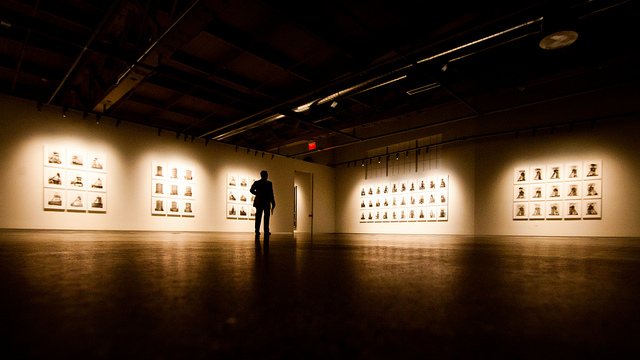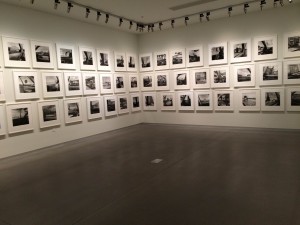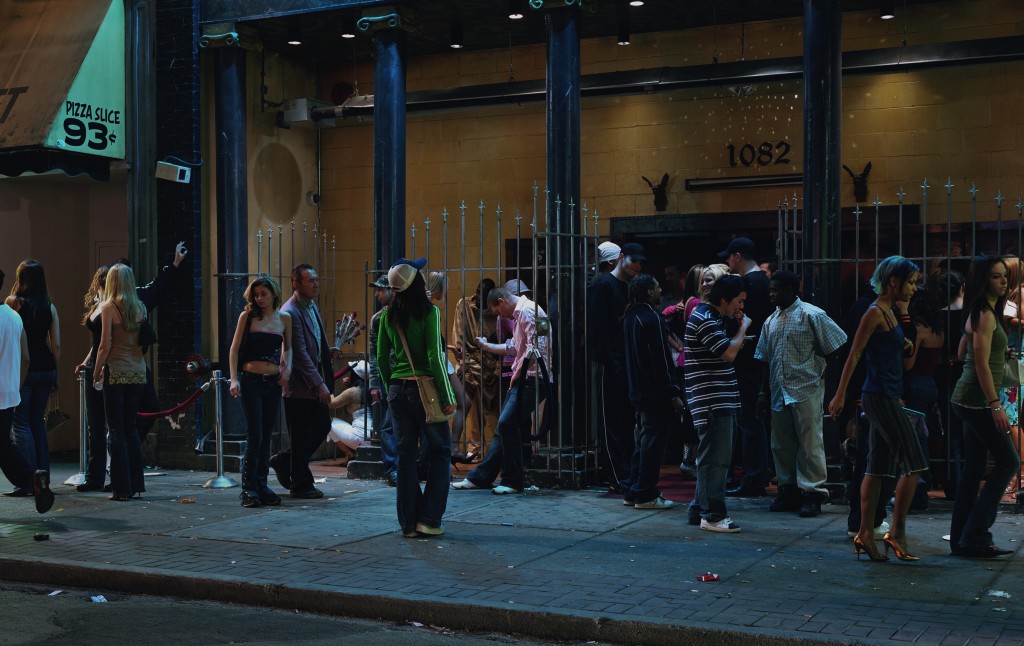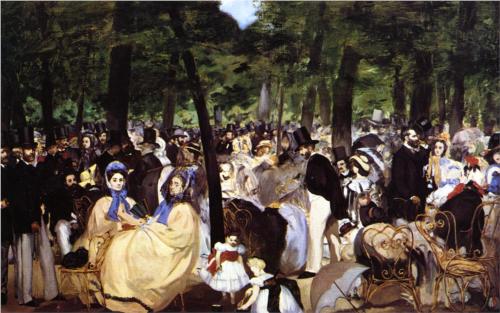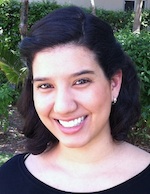The Pier 24 Photography center occupies an anonymous-looking warehouse on Embarcadero under the Bay Bridge in San Francisco. Only a few visitors are allowed at a time; you must make an appointment to view the photographs hanging in the center’s spare interior space, divided by neutral-colored walls. The exhibition’s catalogue encourages the visitor to experience a sense of place, but this must surely only be limited to the photography—the atmosphere itself prevents you from feeling as if you are in any particular space or point in time. Walking around the center’s current exhibit, entitled A Sense of Place, the relative silence and absence of other viewers makes you are so intensely aware of your footsteps, your solo presence, that running into another human in a room is enough to bring you up short. During a recent visit to the center, my surroundings were telling me to decontextualize: don’t let real life intrude upon the appreciation of life depicted in the photographs. I tried, and failed, to play along.
With so much photographic history on display, just considering the series of images in relation to one another could take far more than the two hours allotted to each visitor. If you hold onto the off-kilter sensation that arises looking at a room full of Lee Friedlander’s America by Car photographs until you reach the room displaying Stephen Shore’s Uncommon Places, the latter photographs’ quiet qualities—their meticulous outlining of space, their optimism, their stillness—become even more pronounced.
This re-orientation of the viewing experience is a great exercise and one that you don’t often get to do since photography, especially street photography, often occupies just one or two rooms in many fine art museums. But the two pieces, which across the hall from one other towards the back of the museum, that incited the most reflection in me spoke not just to each other but also said volumes about San Francisco’s current identity crisis.
In Erik Kessels’ 24 Hours in Photos, thousands of 4×6 photos form small mounds occupying about a third of a tightly enclosed room. The photos, of a flower, a car trunk, faces, full bodies, a rubber duck, the Golden Gate Bridge, various landscapes, were chosen because they were all uploaded to Flickr in one 24-hour period. Kessels printed them out, piled them up, and created a pathway through the heaps so that you can stand right in the middle of the piece.
While standing among the photos, mulling over how while the moments of our private lives appear large and important to us, are insignificant when reduced to a few inches and set ruthlessly against the moments of everyone else, my mind started to wander to San Francisco’s cultural woes with gentrification and the general unease that one senses in this city about the influence of the tech companies and the products they make on city life.
One symbol, aided perhaps by the imagery Rebecca Solnit creates in her London Review of Books letters, of the housing crisis in San Francisco is of the San Francisco-dwelling tech worker-robot who isolates herself from the surrounding community by immersing herself in technological gadgets—texting, taking a selfie or a picture of the new coffee shop on the corner, tweeting. Or worse, wearing Google Glass, freaking out everyone on the street, taking pictures or recording surroundings with a whispered command. The recurring image, or stereotype, of this worker seems of symptomatic of the aesthetic anxieties that same San Franciscans have (in addition to practical concerns like long-time residents being evicted to make way for tech workers and what spaces tech buses can’t and can use to shuttle workers to work). They seem to be asking, What should our city look like, both to outsiders and to its own citizens, and how does that reflect what we think are its essential qualities?
This question brings up another anxiety about the possibility that this influx of people who appear to put a premium on virtual communities and digital life will reduce this city to the type of place that lends itself to that digital life— the hastily taken snapshots, texts, and tweets—ones where you can check in, pay with your phone, take a shot of the products and get out. These are the places, as Evgeny Morozov points out, will likely show up on your Google Maps app, which can now be personalized. It’s perhaps because we are so close to the centers of these companies that the threat of this digital-age metaphysical quandary looms so large here.
Back in the room, the sheer size of the mound that the photos create is impressive. You could dive into it if you wanted to; you could drown in the photos. But I didn’t dive into the photos.
*******
Jeff Wall’s In Front of a Nightclub glowed right across the hall from Kessels’ exhibit. The enormous photo—it’s about 8 by 12 feet, the size of a 19th century painting —sits in a lightbox, heavily backlight. There was a bench right in front of it, so I sat down. The scene is of a crowd of people hanging out in front of a nightclub. A group of men and women flirt right in front of the entrance, framed by the metal gate and neoclassical pillars that separate the club from the street. A young man in casual day dress fully occupies himself with slice of pizza in the middle ground, a cigarette-dotted sidewalk. Every subject or group of subjects is fully occupied in her own sphere of the photo; unaware of the camera or each other. Most of the subjects are in mid-movement of some quotidian kind—yet they are all completely still, like mannequins.
In a New York Times Magazine article published in 2007, Wall explained how he went to the Vancouver nightclub depicted in the photograph, but was unable to get the kind of conditions he wanted. So he rebuilt the building’s entrance in his studio and combined his photos of that with shots that he took of the people whose look he liked outside the real club, in addition to forty models he hired. It’s a completely constructed tableau, which explains the lack of spontaneity and surprise in its captured movement and perspective. In the same article (which I read after visiting the exhibit), I also learned that Wall takes particular inspiration from the 19th century painters of modern city life like Édouard Manet. Upon further exploration, I learned that he is often accused, by photography critics, of being a kind of post-modern fraud, by bestowing the highbrow authenticity of painting on a mass media form like photography. Referring to this combining of sensibilities, the blogger John Anderson wrote: “It would seem almost too calculated but for the fact that Wall undoubtedly is aware of the ironies and seeks to explore them. However, the ironies stem from the method and thus are as hidebound as the rest of this ultimately claustrophobic exercise in self-referentiality. One can get lost in the magnitude and detail of a Wall, but the experience seems something of a ruse in the end.”
Though I understand Anderson’s concern with Wall’s work, it wasn’t the most interesting interplay in the photo. What stood out to me was the interplay between the urban past and present in the photo’s imagined space. Seeing the photo in this light, the inspiration of Manet and the like, makes much more sense. One important image that Manet brings to mind is of the modern flâneur, a man who strolls at a leisurely pace around the city, observing and consuming city life, taking a kind of languid pleasure in doing so. This man was both in the sphere of the commercialism and consumerism that powered the modern city, and outside of it—a detached observer. Note that I use “leisurely” and “languid” to describe the man’s actions, because the fact that the flâneur operates at a slower pace than the rest of the city is crucial. Because he takes his time, the flâneur is in the best position to consider the little pockets of life that spring up because of and in spite of the city’s commercialism. And sometimes he doesn’t just consider, he captures, so we get Music in the Tuileries Gardens.
This is the urban past that Wall evokes in the photo. Sit in front of it and imagine: At 1 a.m., you stroll along a dark street, the shutters dropped on all the storefronts. Suddenly, there’s light, life, ahead. You stop in front of the entrance to the club, and are able to stand there and observe. Nobody gives you any trouble. You can scrutinize the movements, the personal ticks, the laughter, of every person in front of the club. You can imagine lives for them. You can pretend you’re Virginia Woolf in “A Street Haunting” stepping out for a pencil on a winter evening when, “the champagne brightness of the air and the sociability of the streets are grateful.”
At the same time, the photo’s constructedness and the commercial gloss that the lightbox structure affords it bring to mind a reality of the urban present: that communities around the city are now often artificially created by commercial force, mainly advertising through social media. Walking around certain upscale sections of Manhattan during the day, you run into a group on the sidewalk. Are they neighbors gathering to chat? No, they are tourists who are in line for the latest overpriced baked goods. Walking around many upscale neighborhoods in San Francisco during weekdays, I walked several blocks without encountering anybody at all. It’s a suburban-like atmosphere: quiet, almost abandoned during weekdays; almost ecstatically busy on the weekends. It’s inevitable when a neighborhood is populated by people who drive to their office and stay there all day.
These ideas about cities—you can find much better versions of them in Jane Jacobs work or more recently Rebecca Solnit’s writing. But it was perhaps being new to San Francisco and having the time to walk around the city, thinking about how it is and is not like others I’ve lived in, eventually making my way to this exhibit, that these words from Joan Fontcuberta seemed to frame my thoughts about the photography, “Reality does not exist by itself. It’s an intellectual construction; and photography is a tool to negotiate our idea of reality.” Put the exhibit in the city, and the city will seep its way into it.
•

